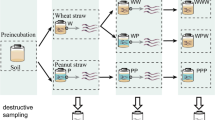Abstract
The presence of non-indigenous microbial contaminants resulting from human faecal contamination of old and currently occupied base and field camp sites in South Victoria Land, Antarctica, was assessed by PCR amplification of extracted soil DNA using species-specific PCR primers. Positive controls (samples recovered from the environs of Scott Base, including the sewage outfall) gave strong signals with Escherichia coli primers whereas Clostridium clostridiiforme primers yielded a signal only with the sewage outfall sample. A comparison was made of PCR amplification results from samples from the abandoned Canada Glacier camp site, the Lake Fryxell summer camp site, the Cape Bird Adelie penguin colony and pristine sites from relatively inaccessible regions of the Taylor Valley. Results indicated a possible residual level of E. coli contamination in the abandoned Canada Glacier camp site, but no significant contamination of the currently occupied Lake Fryxell camp site. These data may provide indirect evidence for improved awareness and standards of waste handling and disposal over the past two decades of Dry Valley field research.
Similar content being viewed by others
Author information
Authors and Affiliations
Additional information
Accepted: 25 March 2000
Rights and permissions
About this article
Cite this article
Sjöling, S., Cowan, D. Detecting human bacterial contamination in Antarctic soils. Polar Biol 23, 644–650 (2000). https://doi.org/10.1007/s003000000137
Issue Date:
DOI: https://doi.org/10.1007/s003000000137




